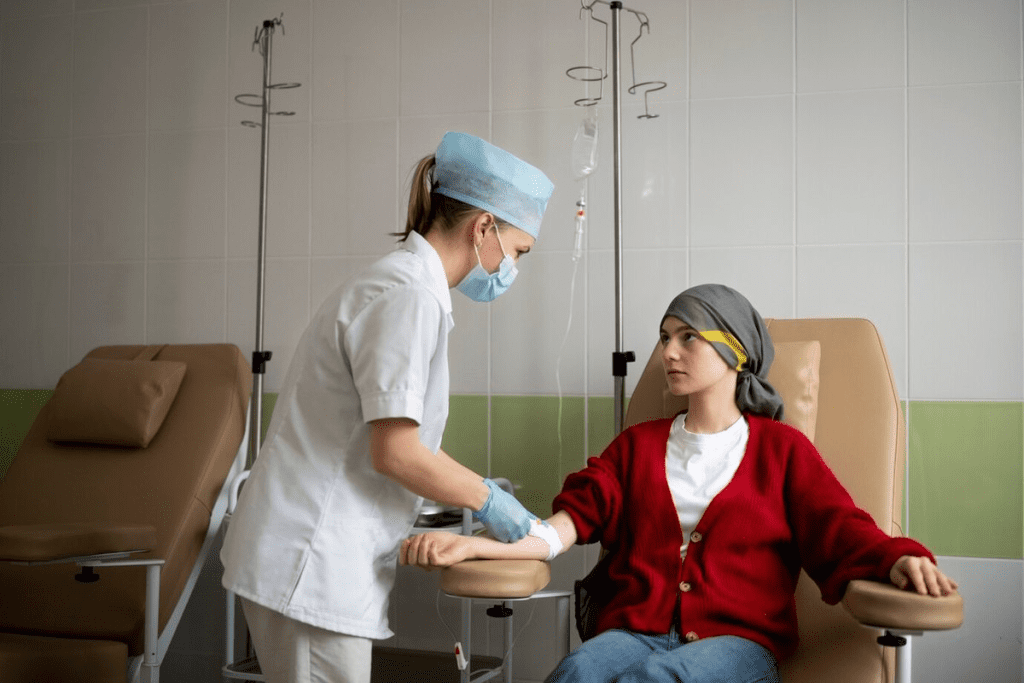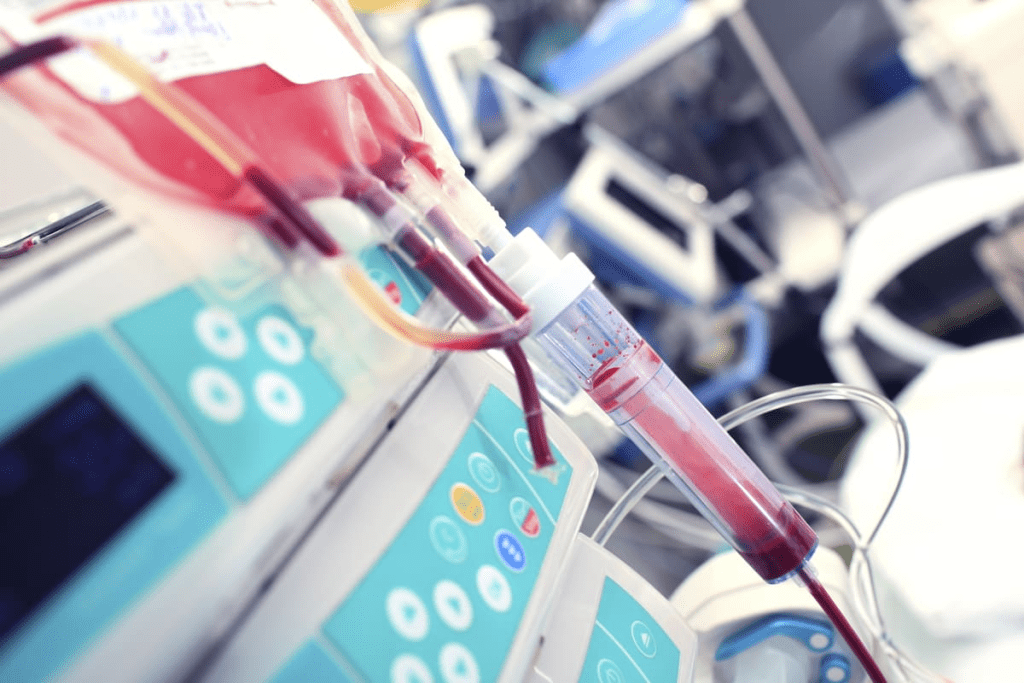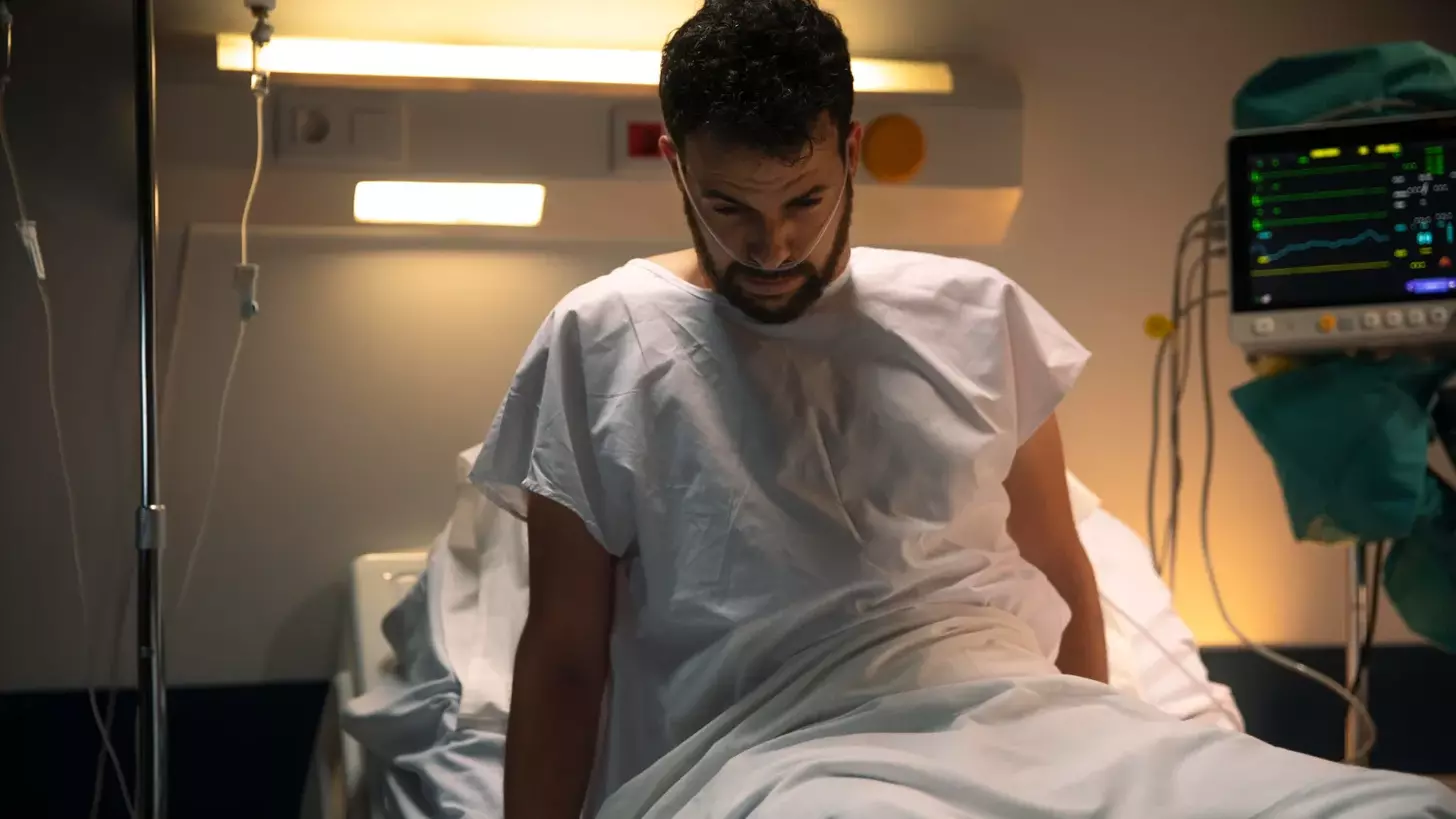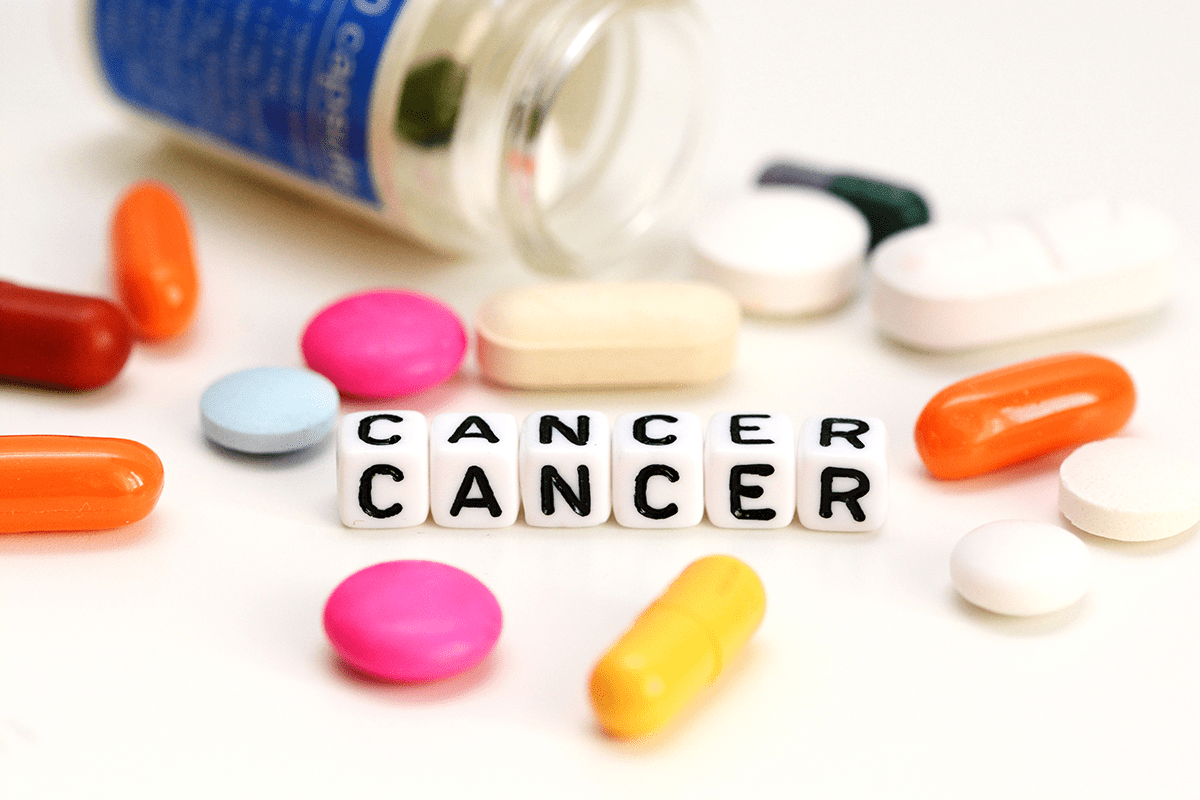Last Updated on November 26, 2025 by Bilal Hasdemir

Cancer treatment has made big strides, with chemotherapy playing a key role. Chemotherapy is a wide term for treatments using drugs to kill cancer cells. But, how these treatments are given can change, leading to types like adjuvant chemotherapy.Adjuvant vs neoadjuvant chemo explained. Discover how timing affects outcomes and why doctors choose each. lets check it out.
It’s important for patients to know the difference between adjuvant chemotherapy and regular chemotherapy. Chemotherapy directly attacks cancer. But, adjuvant chemotherapy is given after the main treatment to lower cancer coming back.
Key Takeaways
- Chemotherapy is a treatment that uses drugs to kill cancer cells.
- Adjuvant chemotherapy is administered after the primary treatment.
- The main goal of adjuvant chemotherapy is to reduce the risk of cancer recurrence.
- Understanding the difference between chemotherapy types is vital for patient care.
- Adjuvant chemotherapy is a specific type of chemotherapy with a distinct purpose.
Understanding Chemotherapy Basics
Chemotherapy is a key treatment in fighting cancer. It uses strong medicines to kill cancer cells. It’s used alone or with other treatments like surgery and radiation.
Definition and Purpose of Chemotherapy
Chemotherapy uses drugs to kill cancer cells. Its main goal is to stop cancer from growing. The article “Effects of different exercise prescription parameters on metabolic and inflammatory biomarkers in cancer patients: a systematic review, meta-analysis, and meta-regression” says it’s a common cancer treatment.
Chemotherapy’s purpose can change. It can try to cure cancer or just make patients feel better. This is true for those with advanced cancer.
“Chemotherapy is a critical component of cancer treatment, giving hope to patients worldwide.”
” Oncology Expert
How Chemotherapy Works in the Body
Chemotherapy targets fast-growing cells, like cancer cells. The drugs go through the blood to reach cancer cells everywhere in the body.
The process is simple:
- Chemotherapy drugs are given, usually through an IV or by mouth.
- The drugs move through the blood to different parts of the body.
- When they find cancer cells, they kill them by damaging their DNA or stopping them from growing.
- Then, the body gets rid of the dead cancer cells.
Chemotherapy’s ability to reach cancer cells everywhere makes it very useful. It helps treat cancers that have spread or could spread. Knowing how chemotherapy works helps patients understand their treatment options better.
The Concept of Adjuvant Therapy

Adjuvant therapy is a key part of cancer treatment. It helps the main treatments like surgery, chemotherapy, or radiation work better. This approach is used to make treatments more effective.
Definition of Adjuvant Therapy
Adjuvant therapy is a treatment added to the main one to lower cancer coming back. The article “The use of phytotherapy in hepatocellular carcinoma “ a systematic review” highlights its importance. The main goal is to kill any cancer cells left after the main treatment, cutting down the chance of cancer coming back.
Historical Development of Adjuvant Treatments
Adjuvant therapy has grown a lot over time. It started because main treatments alone weren’t enough to fight cancer. New technologies, understanding cancer better, and more precise treatments have helped it grow.
Here’s a quick look at how adjuvant treatments have evolved:
| Period | Advancements in Adjuvant Therapy | Impact on Cancer Treatment |
| Early Years | Introduction of chemotherapy as an adjuvant treatment | Initial successes in reducing recurrence rates |
| 1980s-1990s | Development of hormonal therapies for hormone-sensitive cancers | Improved outcomes for patients with breast and prostate cancers |
| 2000s-Present | Emergence of targeted therapies and immunotherapies | Enhanced specificity and efficacy in treating various cancer types |
The history of adjuvant treatments shows the constant push to better cancer care. Knowing how it has evolved helps doctors understand the complexity of cancer treatment. It shows the need for a complete approach to care for patients.
What is Adjuvant Chemotherapy?

Adjuvant chemotherapy helps lower the chance of cancer coming back after the main treatment. It is given after treatments like surgery to target any cancer cells left behind.
Definition and Purpose
Adjuvant chemotherapy is given after the main treatment to kill any cancer cells left. Its main goal is to lower the risk of cancer coming back by targeting tiny cancer cells.
A study in “3D Silk Fibroin-Gelatin/Hyaluronic Acid/Heparan Sulfate Scaffold Enhances Expression of Stemness and EMT Markers in Cholangiocarcinoma” shows its importance. It helps manage different cancers by reducing the risk of them coming back.
When Adjuvant Chemotherapy is Recommended
It’s recommended when there’s a high chance of cancer coming back. Doctors look at the cancer’s stage, if it’s in lymph nodes, and the tumor’s grade. For example, in breast cancer, it’s often suggested if the cancer has spread or if the tumor is big and aggressive.
“The use of adjuvant chemotherapy has been shown to improve survival rates in patients with various types of cancer by reducing the risk of recurrence.”
Adjuvant Chemotherapy Protocols
Protocols for adjuvant chemotherapy depend on the cancer type, stage, and patient’s health. It often involves a mix of chemotherapy drugs given over several cycles. For instance, in colorectal cancer, a common treatment might include fluorouracil and oxaliplatin.
Each patient’s treatment plan is made based on their cancer and health. The aim is to make the treatment as effective as possible while keeping side effects low.
Neoadjuvant Chemotherapy Explained
Neoadjuvant chemotherapy is a key part of cancer treatment. It’s given before the main treatment to make tumors smaller. This method is getting more attention for its role in better surgery results and patient outcomes.
Definition and Purpose
Neoadjuvant chemotherapy is a type of treatment given before the main therapy. This could be surgery or radiation. Its main goal is to shrink the tumor, making it easier to remove surgically.
“The goal is to reduce the tumor size, making it more manageable for surgical removal,” as noted in recent oncology research. This approach helps in planning surgery and shows how the tumor reacts to the treatment.
When Neoadjuvant Chemotherapy is Recommended
Neoadjuvant chemotherapy is suggested in many cases. It’s often used when tumors are large or in hard-to-reach places. This makes surgery risky or complicated.
It’s commonly used in treating breast, esophageal, and rectal cancers. This is because it helps shrink tumors that are hard to remove.
- To shrink tumors that are inoperable or borderline operable
- To assess the effectiveness of chemotherapy on the tumor
- To potentially preserve organ function by reducing the extent of surgery required
Neoadjuvant Chemotherapy Protocols
Protocols for neoadjuvant chemotherapy vary based on the cancer type, stage, and patient health. These plans are intense, aiming to shrink tumors as much as possible before the main treatment.
A study on treating gastric cancer with peritoneal metastases with neoadjuvant chemotherapy is ongoing. It explores the effectiveness of this approach.
“Neoadjuvant chemotherapy is a critical component in the management of various cancers, providing a chance to assess tumor response and adjust treatments.”
Adjuvant vs Neoadjuvant: Key Differences
Adjuvant and neoadjuvant chemotherapy are two ways to fight cancer. They differ in when they are given and what they aim to do. The main difference is when they are used in relation to surgery.
Timing in the Treatment Process
When chemotherapy is given is key to its success. Adjuvant chemotherapy comes after surgery to kill any cancer cells left behind. This lowers the chance of cancer coming back. Neoadjuvant chemotherapy, on the other hand, is given before surgery. It aims to shrink tumors, making them easier to remove.
Studies, like “Enchondromas of the Hand: Curettage With Autogenous Bone vs. Bioactive Glass S53P4 for Void Augmentation,” show timing is everything. Whether to use adjuvant or neoadjuvant chemotherapy depends on the cancer type and stage.
Goals and Objectives of Each Approach
The goals of adjuvant and neoadjuvant chemotherapy vary based on their timing and the cancer situation.
- Adjuvant Chemotherapy: Its main goal is to kill any cancer cells left after surgery, lowering the chance of cancer coming back.
- Neoadjuvant Chemotherapy: It aims to shrink tumors before surgery, making it easier to remove and saving more tissue.
Impact on Surgical Outcomes
Adjuvant and neoadjuvant chemotherapy can greatly affect surgery results. Neoadjuvant chemotherapy can make surgery easier by shrinking tumors. Adjuvant chemotherapy can improve long-term results by reducing recurrence risk.
It’s important for doctors and patients to understand these differences. This helps make better choices for cancer treatment.
The Adjuvant Setting: What It Means
In cancer therapy, the adjuvant setting is a specific stage of treatment. It involves using extra treatments after the main therapy to lower cancer recurrence risk.
Definition of Adjuvant Setting
The adjuvant setting means giving adjuvant therapy after the main treatment. This main treatment could be surgery, radiation, or another therapy. The aim is to get rid of any cancer cells left behind by the first treatment.
Adjuvant therapies include chemotherapy, hormone therapy, targeted therapy, or radiation therapy. The choice depends on the cancer type, its stage, and the patient’s health.
Clinical Implications
The adjuvant setting’s clinical implications are big. It helps lower cancer recurrence risk, improving survival and quality of life for patients. For example, adjuvant chemotherapy can greatly reduce recurrence risk in cancers like breast and colorectal cancer.
Effective adjuvant treatment needs careful planning. It considers the patient’s health and cancer specifics. This includes weighing the therapy’s benefits and risks to make the best treatment choice.
The adjuvant setting is key in cancer care, adding protection against recurrence. As research grows, so do the adjuvant treatments, giving patients new hope.
Types of Cancers Treated with Adjuvant Chemotherapy
Adjuvant chemotherapy helps treat many types of cancer. It gives patients more treatment options. This method has greatly improved cancer outcomes.
Breast Cancer
Adjuvant chemotherapy is key for breast cancer. It’s used when cancer has spread to lymph nodes or is likely to come back. Chemotherapy regimens like anthracycline and taxane are often used.
| Chemotherapy Regimen | Usage in Breast Cancer |
| Anthracycline-based | Used for high-risk patients |
| Taxane-based | Effective for node-positive patients |
Colorectal Cancer
Adjuvant chemotherapy is vital for colorectal cancer, mainly in stage III. Fluoropyrimidine-based chemotherapy, with oxaliplatin, is a common choice.
Lung Cancer
Adjuvant chemotherapy helps prevent lung cancer from coming back after surgery. Platinum-based chemotherapy is often used for non-small cell lung cancer.
Other Cancer Types
Adjuvant chemotherapy is also used for ovarian, gastric, and some sarcoma cancers. The treatment depends on the cancer type and stage.
Adjuvant chemotherapy is a key part of cancer treatment. It has greatly improved survival rates and reduced recurrence in many cancers.
Types of Cancers Treated with Neoadjuvant Chemotherapy
Neoadjuvant chemotherapy is used for several cancers, like breast, esophageal, gastric, and rectal cancer. It’s a key part of cancer treatment, helping patients get better results.
Breast Cancer
Neoadjuvant chemotherapy is often used for breast cancer, mainly for those with big tumors. It aims to make the tumor smaller, so it can be removed more easily. This method helps more patients keep their breasts.
Esophageal and Gastric Cancers
For esophageal and gastric cancers, neoadjuvant chemotherapy helps make surgery more successful. It reduces tumor size, making surgery more likely to be effective. This can lead to longer lives for these patients.
Rectal Cancer
In rectal cancer, chemotherapy is combined with radiation to shrink tumors before surgery. This approach improves surgery results and helps control the disease better.
Other Cancer Types
Neoadjuvant chemotherapy is also used for lung cancer and some sarcomas. The choice depends on the cancer type, stage, and the patient’s health.
Neoadjuvant chemotherapy is a big step forward in cancer treatment. It allows for more tailored and effective care. As research grows, it will likely help more patients with different cancers.
Benefits of Adjuvant Chemotherapy
Adjuvant chemotherapy is key in helping patients by cutting down on cancer coming back and boosting survival chances.
Reducing Risk of Recurrence
One major plus of adjuvant chemotherapy is it helps lower the chance of cancer coming back. It kills off any cancer cells left after surgery. This makes it less likely for cancer to return.
Research shows it works well in many cancers like breast, colorectal, and lung cancers.
Improving Survival Rates
Adjuvant chemotherapy also helps patients live longer by targeting cancer cells that have spread. This makes the treatment plan more effective.
Recent studies show it has led to better survival rates for many cancer patients.
Success Rates and Statistics
Success of adjuvant chemotherapy is shown in statistics and clinical trials. For example, a study on cholangiocarcinoma found it can improve survival and lower recurrence rates.
| Cancer Type | Recurrence Reduction | Survival Rate Improvement |
| Breast Cancer | 30-40% | 20-30% |
| Colorectal Cancer | 25-35% | 15-25% |
| Lung Cancer | 20-30% | 10-20% |
The data shows how vital adjuvant chemotherapy is in cancer treatment. It improves outcomes and saves lives.
Benefits of Neoadjuvant Chemotherapy
Neoadjuvant chemotherapy is a key treatment in fighting cancer. It’s given before surgery to help in several ways. This method aims to prepare the body for the main treatment.
Tumor Shrinkage Before Surgery
One big plus of neoadjuvant chemotherapy is it makes tumors smaller before surgery. This makes surgeries more precise. A study on colorectal cancer showed it greatly reduced tumor size, making surgery easier.
Smaller tumors also mean less damage during surgery. This leads to fewer complications and quicker recovery times. It’s a win-win for patients.
Assessing Treatment Response
Neoadjuvant chemotherapy lets doctors see how well cancer responds to treatment. By checking how the tumor reacts, they can plan better for the next steps. This is very important for treatment success.
If a tumor shrinks a lot, it shows the treatment is working well. This helps in deciding what to do next after surgery.
Success Rates and Statistics
Many studies show neoadjuvant chemotherapy improves outcomes. Success rates depend on the cancer type, stage, and treatment used.
| Cancer Type | Success Rate with Neoadjuvant Chemotherapy |
| Breast Cancer | Significant tumor shrinkage in 70-80% of cases |
| Colorectal Cancer | Improved surgical outcomes in 60-70% of cases |
| Lung Cancer | Tumor downsizing in 50-60% of cases |
These numbers highlight the benefits of neoadjuvant chemotherapy. It helps shrink tumors and lets doctors check treatment success. This is a big part of fighting cancer.
Side Effects and Management
Managing side effects is key when it comes to chemotherapy. It affects the quality of life for those fighting cancer. Chemotherapy targets cancer cells but also hits healthy cells, causing side effects.
Common Side Effects of Chemotherapy
Chemotherapy can lead to many side effects. This is because it affects cells that grow fast. Some common ones include:
- Nausea and Vomiting: Often managed with antiemetic medications.
- Fatigue: A persistent feeling of tiredness that can be debilitating.
- Hair Loss: Caused by the effect of chemotherapy on hair follicles.
- Blood Cell Count Changes: Leading to increased risks of infection, anemia, and bleeding.
Specific Considerations for Adjuvant Treatment
Adjuvant chemotherapy is given after the main treatment to lower cancer risk. Its side effects are similar to regular chemotherapy. But, the treatment’s context and the patient’s health can change how it’s managed.
Specific Considerations for Neoadjuvant Treatment
Neoadjuvant chemotherapy is given before the main treatment to shrink tumors. It’s important to manage side effects well to keep the patient ready for the next treatment.
Managing Side Effects Effectively
Managing chemotherapy side effects well needs a mix of prevention, quick action, and support. Some ways to do this include:
| Side Effect | Management Strategy |
| Nausea and Vomiting | Antiemetic drugs, dietary changes |
| Fatigue | Rest, exercise, nutritional support |
| Hair Loss | Scalp cooling, wigs, scalp care |
Managing side effects well needs teamwork between the patient, oncologist, and healthcare team. Knowing the side effects and having plans to deal with them helps patients get through chemotherapy better.
Recent Advances in Adjuvant and Neoadjuvant Therapies
The field of cancer treatment is changing fast. New advances in adjuvant and neoadjuvant therapies are making a big difference. They are helping patients live better and changing how we fight cancer.
Targeted Therapies
Targeted therapies are key in fighting cancer. They work on specific molecules that help cancer grow. This makes treatment more effective and safer for healthy cells.
Examples of targeted therapies include drugs for HER2-positive breast cancer and EGFR inhibitors for lung cancer. These treatments are showing great promise in boosting survival rates and cutting down on cancer coming back.
Immunotherapy Approaches
Immunotherapy uses the body’s immune system to fight cancer. Checkpoint inhibitors, a type of immunotherapy, have been very effective against cancers like melanoma and lung cancer.
Research is exploring how to use immunotherapy in adjuvant and neoadjuvant treatments. Early results are promising, showing it can boost the immune system’s fight against cancer.
Personalized Medicine in Chemotherapy
Personalized medicine is changing cancer treatment. It tailors therapies to each patient’s unique cancer. This involves genetic testing to find specific mutations to target.
Next-generation sequencing and other advanced technologies help doctors choose the best treatments. Personalized medicine is key in adjuvant and neoadjuvant therapies, helping pick the right treatment for each patient.
As research keeps moving forward, combining targeted therapies, immunotherapy, and personalized medicine will make treatments even better. This will lead to better outcomes for patients.
Conclusion
It’s important to know the difference between adjuvant and neoadjuvant chemotherapy in cancer treatment. Both are key in managing cancer, but they are used at different times and for different reasons.
Adjuvant chemotherapy is given after the main treatment to lower the chance of cancer coming back. Neoadjuvant chemotherapy is used before the main treatment to make tumors smaller and check how well the treatment works.
Choosing between these treatments depends on many things. These include the cancer type and stage, the patient’s health, and what the treatment goals are. New advances in targeted therapies, immunotherapy, and personalized medicine have made both treatments more effective.
Knowing the good and bad of these treatments helps patients and doctors make better choices. This can lead to better results in the fight against cancer.
FAQ
What is the difference between adjuvant chemotherapy and chemotherapy?
Adjuvant chemotherapy is given after main treatments like surgery to lower cancer coming back. Chemotherapy is a wider term for treatments using chemicals to fight cancer.
What is adjuvant therapy?
Adjuvant therapy is extra treatment given after the main treatment to stop cancer from coming back. It can be chemotherapy, radiation, hormone therapy, or other treatments.
What is neoadjuvant chemotherapy?
Neoadjuvant chemotherapy is given before main treatments like surgery. It makes tumors smaller and easier to remove.
What are the benefits of adjuvant chemotherapy?
Adjuvant chemotherapy lowers cancer coming back, boosts survival rates, and increases chances of staying cancer-free for a long time.
What are the benefits of neoadjuvant chemotherapy?
Neoadjuvant chemotherapy shrinks tumors before surgery, checks how well treatment works, and might improve surgery results.
What types of cancers are treated with adjuvant chemotherapy?
Adjuvant chemotherapy helps treat many cancers, like breast, colorectal, lung, and others.
What types of cancers are treated with neoadjuvant chemotherapy?
Neoadjuvant chemotherapy is for cancers like breast, esophageal, gastric, rectal, and others.
What types of cancers are treated with neoadjuvant chemotherapy?
Neoadjuvant chemotherapy is for cancers like breast, esophageal, gastric, rectal, and others.
What are the common side effects of chemotherapy?
Chemotherapy side effects include nausea, vomiting, tiredness, hair loss, and higher risk of infections.
How is adjuvant chemotherapy different from neoadjuvant chemotherapy?
Adjuvant chemotherapy is after main treatment to stop cancer from coming back. Neoadjuvant chemotherapy is before to shrink tumors.
What is the adjuvant setting?
The adjuvant setting is when adjuvant therapy is given after main treatment to prevent cancer from coming back.
What is the role of targeted therapies in adjuvant and neoadjuvant treatments?
Targeted therapies in adjuvant and neoadjuvant treatments aim at specific cancer cells or pathways. This might improve treatment results.
What is personalized medicine in chemotherapy?
Personalized medicine in chemotherapy means treatments are tailored to each patient. This is based on their genetic makeup, medical history, and other factors.
References
- Xia, L. Y., Hu, Q. L., Zhang, J., et al. (2020). Survival outcomes of neoadjuvant versus adjuvant chemotherapy in triple-negative breast cancer: a meta-analysis of 36,480 cases. World Journal of Surgical Oncology, 18, 129. https://wjso.biomedcentral.com/articles/10.1186/s12957-020-01907-7






